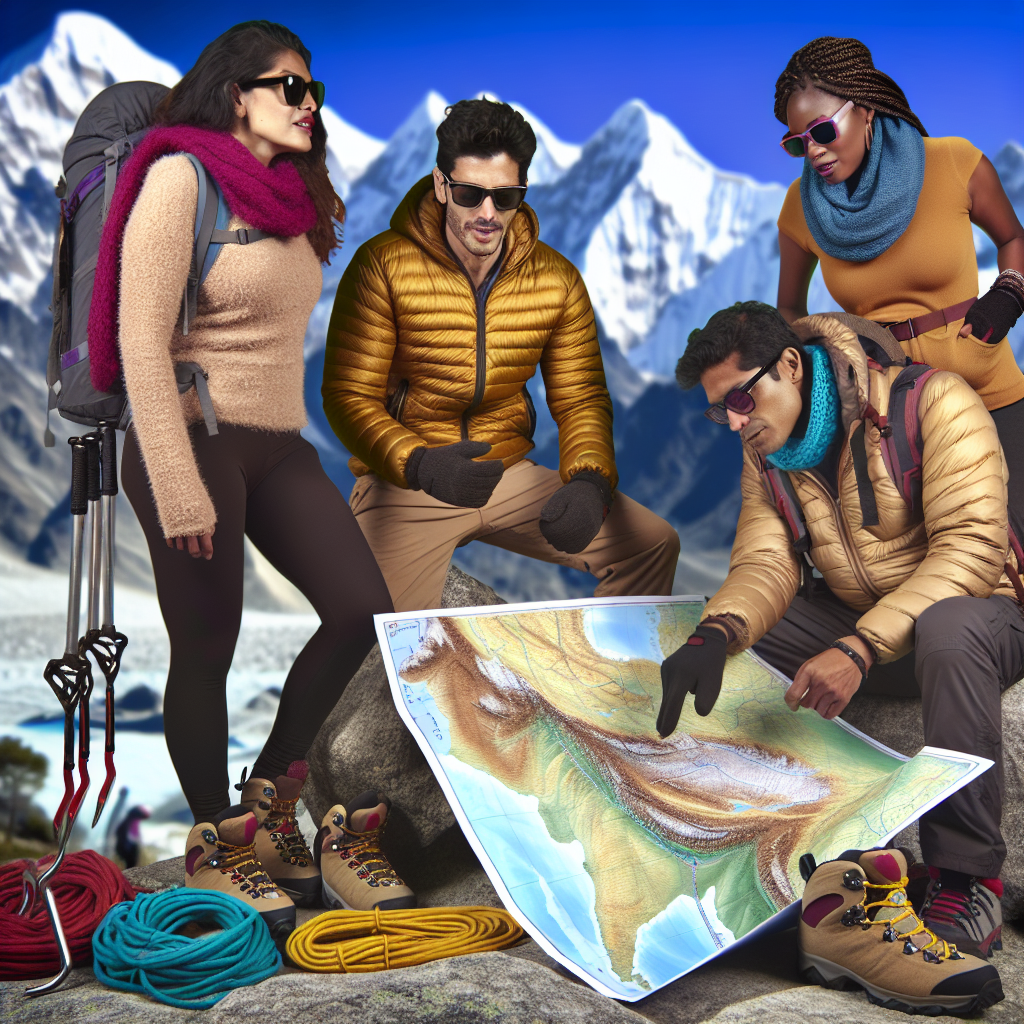Embark on a journey to the roof of the world, where towering peaks, icy glaciers, and breathtaking landscapes await. Trekking in the Himalayas is a once-in-a-lifetime experience that promises unforgettable adventures and unparalleled challenges. From navigating rugged terrains to acclimatizing to high altitudes, preparation is key to conquering these majestic mountains. In this article, we will delve into the challenges of trekking in the Himalayas and provide essential tips for ensuring a safe and successful expedition. So lace up your hiking boots, pack your gear, and get ready to explore the wonders of the Himalayas.
Heading 1: Understanding the Physical Demands of Trekking in the Himalayas
Embarking on a trekking expedition in the Himalayas is a thrilling and challenging experience that requires careful preparation. The physical demands of trekking in this rugged terrain cannot be underestimated, as trekkers face high altitudes, variable weather conditions, and steep ascents and descents.
One of the key challenges of trekking in the Himalayas is the altitude, with many treks reaching heights of over 5,000 meters above sea level. The lower levels of oxygen at high altitudes can make trekking more strenuous and increase the risk of altitude sickness. It is essential to acclimatize slowly and listen to your body to avoid potential health issues.
Another physical demand of trekking in the Himalayas is the steep and rocky terrain, which can be hard on the knees and ankles. Strengthening your lower body muscles and practicing hiking on uneven terrain beforehand can help prepare your body for the rigors of trekking. Additionally, being mentally prepared for long days of walking and carrying a heavy backpack is crucial for a successful trekking experience in the Himalayas.
Heading 2: Essential Gear and Equipment for a Successful Himalayan Trek
When embarking on a trek in the Himalayas, having the right gear and equipment is essential for a successful journey. From sturdy hiking boots to lightweight sleeping bags, being prepared can make all the difference in the face of unpredictable weather and challenging terrain.
One of the most important pieces of gear for a Himalayan trek is a reliable backpack. Look for one that is comfortable, durable, and has enough storage space for all your essentials. A breathable and waterproof jacket is also crucial to protect against the elements, while a sturdy pair of hiking poles can provide stability and support on steep inclines.
Other must-have items include a quality tent for shelter, a warm hat and gloves for cold nights, and a water purification system to stay hydrated along the way. Don’t forget to pack high-energy snacks and a portable stove for cooking meals on the go. With the right gear in tow, you’ll be well-equipped to take on the challenges of trekking in the majestic Himalayas.
Heading 3: Training and Fitness Tips to Prepare for High Altitude Trekking
When it comes to high altitude trekking in the Himalayas, adequate training and fitness preparation are key to overcoming the challenges that come with such an adventure. Here are some tips to help you get ready for your trek:
- Cardiovascular Conditioning: Focus on building endurance through activities such as running, cycling, or swimming to prepare your heart and lungs for the decreased oxygen levels at high altitudes.
- Strength Training: Incorporate exercises that target your legs, core, and upper body to ensure you have the strength and stability needed for long days of trekking with a heavy backpack.
- Altitude Training: If possible, try to schedule in some time for altitude training before your trek to help your body acclimate to the lower oxygen levels. This can include spending time at high altitude destinations or using altitude simulation equipment.
| Tip | Description |
|---|---|
| Hydration | Stay well-hydrated to prevent altitude sickness and aid in acclimatization. |
| Proper Gear | Invest in high-quality trekking gear, including proper hiking boots, clothing layers, and a sturdy backpack. |
By following these training and fitness tips, you’ll be better equipped to handle the challenges of high altitude trekking in the Himalayas and fully enjoy the breathtaking views and unique experiences that come with it.
As you embark on your journey to trek in the majestic Himalayas, remember that preparation is key to overcoming the challenges that lie ahead. From physical fitness to mental readiness, ensuring you are well-equipped will not only make the experience more enjoyable but also safer. So lace up your boots, pack your gear, and get ready to conquer one of the world’s most awe-inspiring landscapes. Adventure awaits in the Himalayas – are you up for the challenge?

